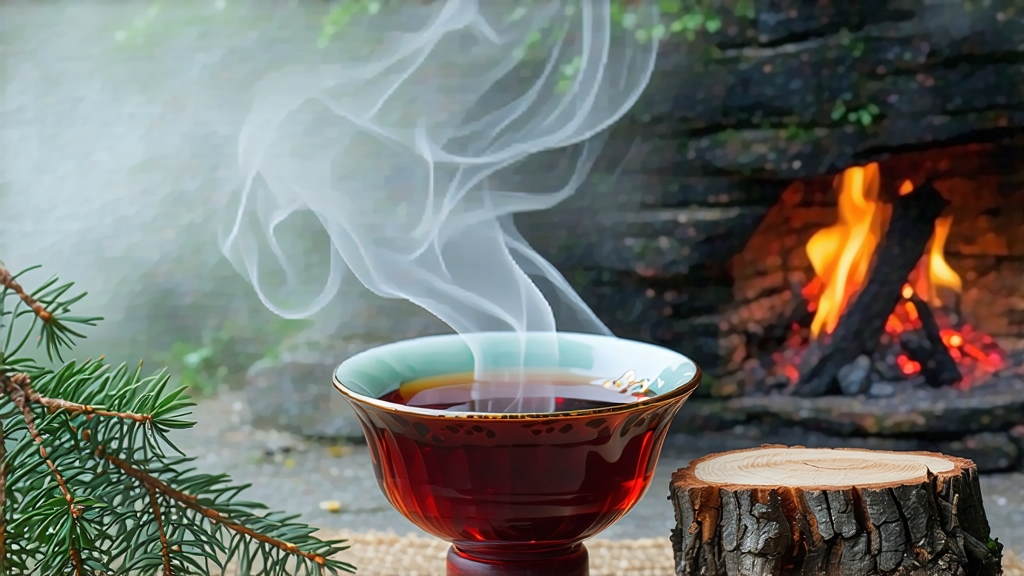
Ask most tea lovers to name the first black tea ever created and they will probably hesitate; mention Lapsang Souchong, however, and eyes light up with the image of a dark, smoky liquor that smells like a campfire in a pine forest. This small-leaf black tea from the Wuyi massif of north-west Fujian is not merely a curiosity—it is the primogenitor of every black tea on earth, the original “red tea” (hong cha) that startled Dutch traders in 1604 and later seduced the courts of Europe, giving birth to the bohea craze that shaped global commerce. To understand Lapsang Souchong is to hold a compass that points back to the very moment when Chinese tea masters first allowed leaves to oxidise fully, then dried them over resinous pine, accidentally inventing a category that would circle the planet.
History: from Ming border guards to London drawing rooms
Local legend fixes the birth date at 1568, late Ming dynasty, when retreating soldiers supposedly commandeered a tea factory in Tongmu village and, pressed for time, dried fresh leaves over burning pine to hasten evacuation. The improbable result—sweet, malt and unmistakably smoky—was an instant hit with the next season’s itinerant merchants. By 1604 the Dutch East India Company had shipped the first chests to Europe, where it was marketed as “bohea” (a corruption of “Wuyi”) and fetched ten times the price of green tea. When Catherine of Braganza introduced tea to the English court in 1662, the smoky leaf from Tongmu was the star, cementing a fashion that would ultimately trigger the Boston Tea Party and the Opium Wars. Thus a humble Fujian village, population under 300, became the hinge on which world history turned.
Terroir: why only Tongmu can be “authentic”
The Wuyi Mountains rise like fortress walls above the Min River, their granite cliffs trapping a perpetual mist that filters sunlight into a soft, silver diffusion. Day-night temperature swings of 15 °C slow leaf growth, concentrating sugars, while the sandy, mineral-rich soil forces tea roots to struggle, deepening flavour. Within this UNESCO biosphere reserve lies Tongmu Guan, a narrow gorge whose pinus taiwanensis and massoniana forests supply the only wood legally sanctioned for traditional smoking. Chinese law now restricts the name “Zheng Shan Xiao Zhong” (Original Mountain Small Variety) to leaves picked within this 600-hectare core zone; everything else is simply “smoked black tea.” The demarcation matters: outside the gorge, even identical cultivars lack the resinous sweetness imparted by Tongmu’s cool, pine-tinged air.
Cultivars: two bushes, two destinies
The original plant is the Xiao Zhong (Small Leaf) cultivar, a shrub whose oval leaves are barely 4 cm long yet bristle with catechins and aroma precursors. In the 1850s missionaries carried seeds to Darjeeling, where the plant mutated into the Indian “China bush,” progenitor of modern AV2 clones. Inside Tongmu, however, clonal fidelity is zealously guarded; cuttings are still taken from mother trees over 250 years old. Since 2005 an unsmoked variant called “Wild Lapsang” has emerged, picked from semi-wild trees growing 1,200 m above sea level. These leaves are withered over charcoal made from local hardwood, yielding a burgundy liquor laced with longan and honey—proof that the same terroir can speak two entirely different dialects.
Craft: the four pillars of pine-smoke alchemy
- Plucking: only the tender single bud plus top two leaves, picked before Qingming when spring mist still clings to the cliffs.
- Withering: 8–10 hours on bamboo racks suspended above pine embers kept at 28 °C; the rising smoke is too cool to cook, yet warm enough to drive off 60 % moisture while impregnating the leaf with α-pinene and limonene.
- Rolling: traditional kneading by hand for 45 minutes ruptures cells, releasing enzymes that oxidise catechins into theaflavins and thearubigins; the leaf turns from jade to copper.
- Smoking & firing: the pivotal act. Fresh pinewood is lit, then smothered to produce